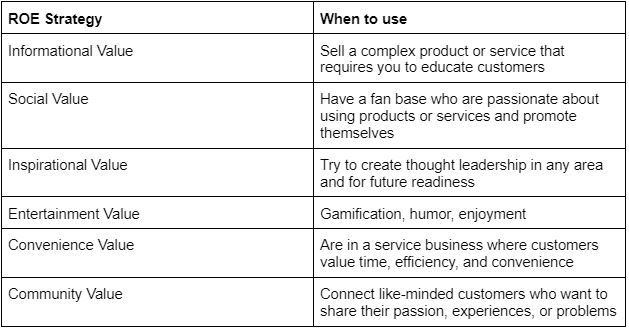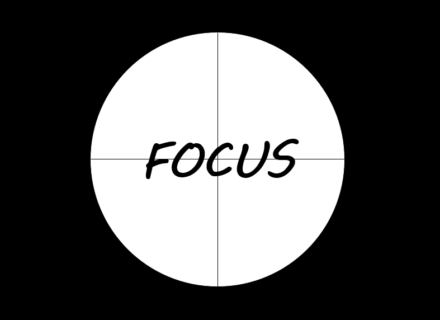The marketing profession is no stranger to a laundry list of acronyms we use in our day-to-day: MQL, SQL, PLG, NPS, ROAS, CPL, CPC, HBO, NFL, and so on. Okay…I threw those last two in just to make sure you’re paying attention! ROI (return on investment) is another one that particularly gets a lot of coverage in the C-Suite, ensuring that marketing leaders are speaking the language of the CFO and CEO. This one also gets the most attention in economic climates like the one we’re in at the moment, so it’s certainly important to understand.
One acronym we don’t hear much about or discuss often enough is ROE. In fact, if you do a Google search, the most common result is ‘Rules of Engagement’. That would have been my response as well. Other results include ‘Return on Equity’ and ‘Record of Employment’.
My focus in this post is on a different type of ROE. Return on Engagement. It’s about the return, or different types of value, our prospects and customers get from our content and other marketing initiatives. While we tend to think about our return on investment (us focused), our customers are thinking about their return on engagement (them focused).
According to Northwestern Kellogg’s Professor Mohan Sawhney, there are six (6) types of customer value to consider when thinking about the return on engagement they receive from our content and marketing initiatives.
->Informational value
->Social value
->Inspirational value
->Entertainment value
->Convenience value
->Community value
“Today, customers have lots of opportunities to engage with a variety of marketers and brands. You may be thinking about return on investment, but they’re thinking about return on engagement.
‘What do I get if I consume your video? If I read your blog post? If I download your whitepaper? How do I become richer, smarter, be more entertained, be more famous? What do I get out of it?’
That’s the idea of return on engagement. Your content has to be useful, that’s your first principle.”
~ Professor Mohan Sawhney , Northwestern Kellogg School of Management
Professor Sawhney says there are two other principles to consider when thinking about ROE:
-Principle Two: Make it human. “Instead of talking like a brand, you need to speak like a human being. Your content needs to have a unique voice and a human voice. You need to find your voice and then be true to your voice.”
-Principle Three: Make it about them. “The more you talk about yourself, the less people will respond to you, or will share and spread your story. It’s got to be about customers.”
The reality brands and marketers face is that our content is not only competing with other content from a standard competitive set (i.e., your blog post vs your top competitor’s blog post), it’s competing with all types of content in the customer’s personal and professional life. You know that popular Netflix series that just came out?… yep, we’re competing with that too. As consumers, we have a finite number of minutes and hours in our day to allocate to any number of things, so how do brands and marketers get their fair share?
Start by considering which of the six types of value you’re delivering and make sure you’re keeping the first principle at the forefront of your marketing and content strategy: Your content has to be useful.
For a more tactical view of how this looks in practice, consider the different use cases of each of the six types of value:

Source: Kellogg School of Management
We live in a noisy world and our customers can be described with the three B’s of Busy, Bombarded and Bewildered. How are we breaking through and delivering something of true value to them? What is their return on engagement with our brand and with our content? Are we following the first principle and giving them something useful?



